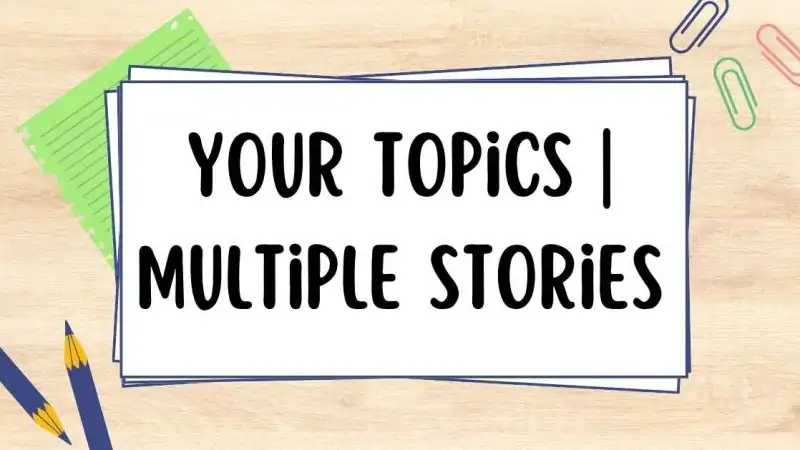Your Topics | Multiple Stories: Unlock Hidden Depths in Your Content
Introduction
In today’s content-saturated landscape, it’s no longer enough to write a single article on a subject and hope it ranks. Brands must now master the art of “your topics | multiple stories“ — an approach that takes one core idea and creates several distinct narratives around it. This technique, known as multi-narrative content strategy, increases your chances of visibility, maximizes audience engagement, and supports SEO by exploring a topic from multiple angles.
Exploring Topics Through Multiple Stories
Content creators often overlook the power of presenting multiple stories on a single topic. Instead of offering one perspective, you can reach broader audiences and create richer content by:
- Addressing different personas
- Segmenting by intent (informational, commercial, emotional)
- Repurposing one idea across various formats
Let’s consider a foundational example: if your core topic is “climate change,” one article can explore personal stories of impact, another the political landscape, a third scientific analysis, and a fourth actionable steps.
Why Use Multiple Stories for a Topic?
Users want content that resonates with them emotionally, intellectually, and practically. A single linear narrative cannot meet the full spectrum of audience needs.
Benefits of Multi-Perspective Storytelling
- Deeper engagement: Each story speaks to a specific user journey.
- Improved dwell time: More diverse content keeps readers on your site longer.
- Higher SEO scores: More LSI and NLP keyword coverage boosts semantic relevance.
- Repurposable content: Break down stories into reels, carousels, guides, or podcasts.
How to Present Multiple Viewpoints on a Topic
Here are some powerful topic storytelling techniques to execute a multi-story content framework:
- Persona-Specific Narratives: Tailor stories to different audience types.
- Timeline Narratives: Explore past, present, and future perspectives.
- Contrasting Opinions: Include expert views and counterarguments.
- Case-Based Narratives: Use real-world examples and case studies.
Step-by-Step Guide to Splitting Topics into Stories
- Define Core Topic
- Segment Target Audience
- Identify Story Angles (at least 3)
- Assign Formats (blog, video, infographic, etc.)
- Integrate NLP Keywords Strategically
- Publish in a Structured Cluster
This step-by-step guide to splitting topics into stories allows you to maintain both SEO coherence and reader diversity.
Tools to Create Multiple Stories from One Topic
Consider these tools when executing a multi-narrative content strategy:
- SurferSEO for content brief generation
- Frase.io for NLP optimization
- Canva for visual content stories
- Notion or Trello for planning
- ChatGPT for ideation
These tools streamline the process of content repurposing into multiple stories and ensure keyword consistency.
Best Platforms for Multi-Story Content
To maximize reach, use platforms optimized for various content types:
- Blog/Websites for in-depth analysis
- YouTube & TikTok for video-based storytelling
- Instagram Carousels for micro-content
- Podcasts for discussion-based storytelling
Knowing the best platforms for multi-story content helps align format with audience expectations.
Template for Multi-Story Content Planning
| Section | Story Angle | Format | Target Persona |
|---|---|---|---|
| Introduction | Foundational Perspective | Blog | General Reader |
| Case Study | Business Use Case | Video | Entrepreneurs |
| Opinion | Expert Analysis | Podcast | Professionals |
| Tutorial | How-To Walkthrough | Infographic | Beginners |
Use this template for multi-story content planning to streamline execution.
Case Study: 5 Versions of One Topic
Topic: “Remote Work”
- The History of Remote Work — timeline-based narrative
- Employee Experiences — persona-based story
- Tools for Remote Work — commercial intent focus
- Challenges and Solutions — problem-solution framework
- Remote Work in 2030 — future vision
This case study: 5 versions of one topic illustrates real execution.
Business Management Multi-Narrative Content
Let’s apply the strategy to the business domain:
- Topic: Leadership in Hybrid Teams
- Stories:
- Historical evolution
- Tools that make it work
- CEO perspectives
- Employee testimonials
- KPIs and ROI
This example from managementworksmedia.com exemplifies business management multi-narrative content.
Multiple Stories for Bible Study Topics
From biblicaltribe.com, spiritual content thrives on layered storytelling:
- Old vs New Testament interpretations
- Personal testimonies
- Theological debates
- Visual timelines of scripture
- Emotional journey narratives
This is a niche application of multiple stories for Bible study topics.
Content Repurposing into Multiple Stories
- Blog to Podcast
- Podcast to Quote Cards
- Quote Cards to Newsletter Snippets
- Newsletter to Webinar
Content repurposing into multiple stories ensures every idea is fully utilized.
Can One Topic Have Multiple Stories?
Absolutely. Multi-angle storytelling increases relevance and depth, helping capture various types of search intent and user preferences.
What’s the Best Way to Structure Multi-Story Content?
Use content clusters. Start with a pillar article using the primary keyword and link out to support articles with semantic keywords and specific storylines.
How Many Angles Can a Topic Have?
There’s no hard limit. Typically, aim for 3-7 distinct narratives per core topic, ensuring each serves a unique user journey.
Conclusion: Unlock Hidden Depths in Your Topics
Embracing a multi-narrative content strategy around your topics | multiple stories not only deepens engagement but also enhances SEO performance, brand trust, and reader loyalty. Whether you’re crafting Bible studies, management strategies, or marketing content, using topic storytelling techniques and layered narratives for engagement is the new standard in content excellence.
futemaxpro.com














Post Comment